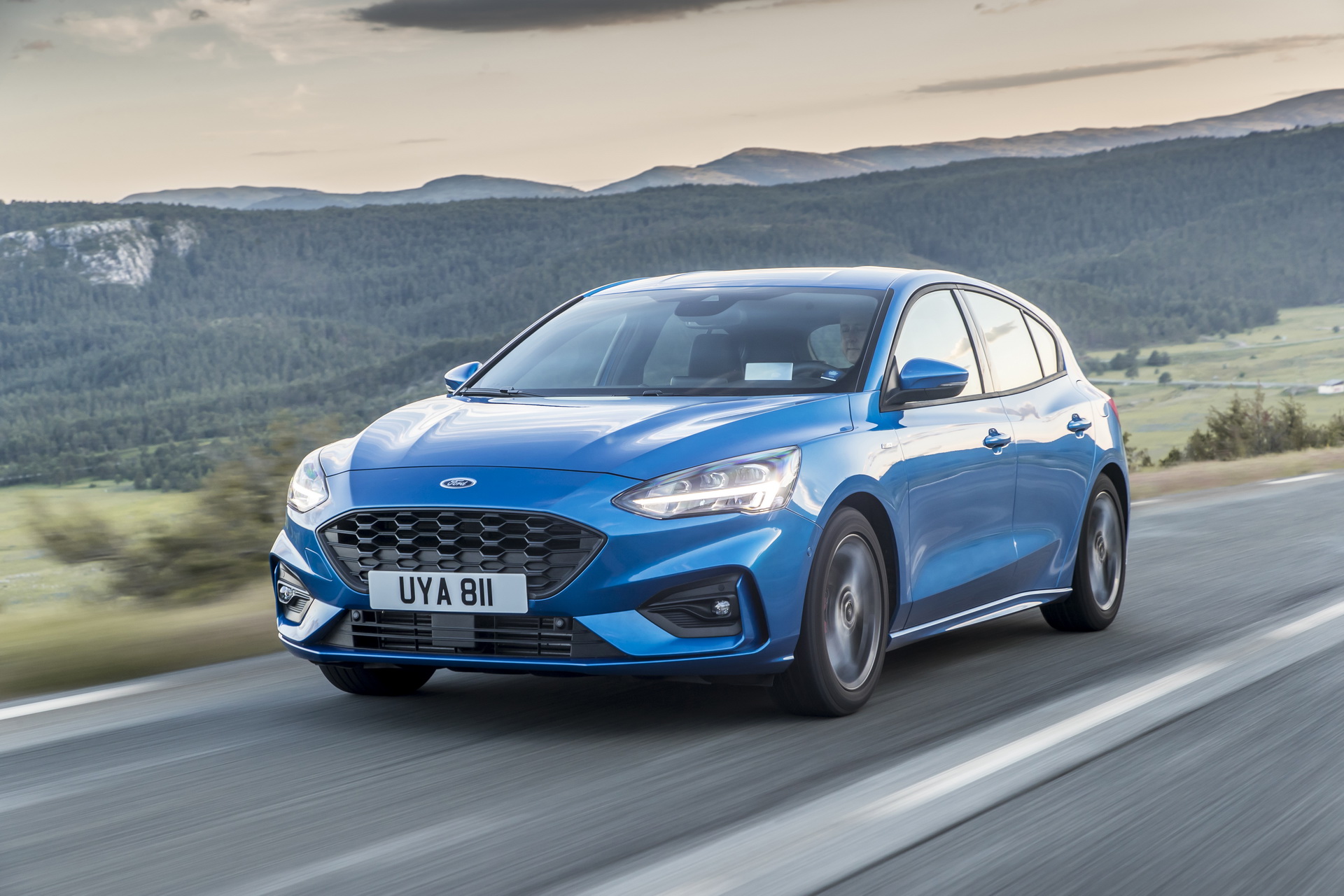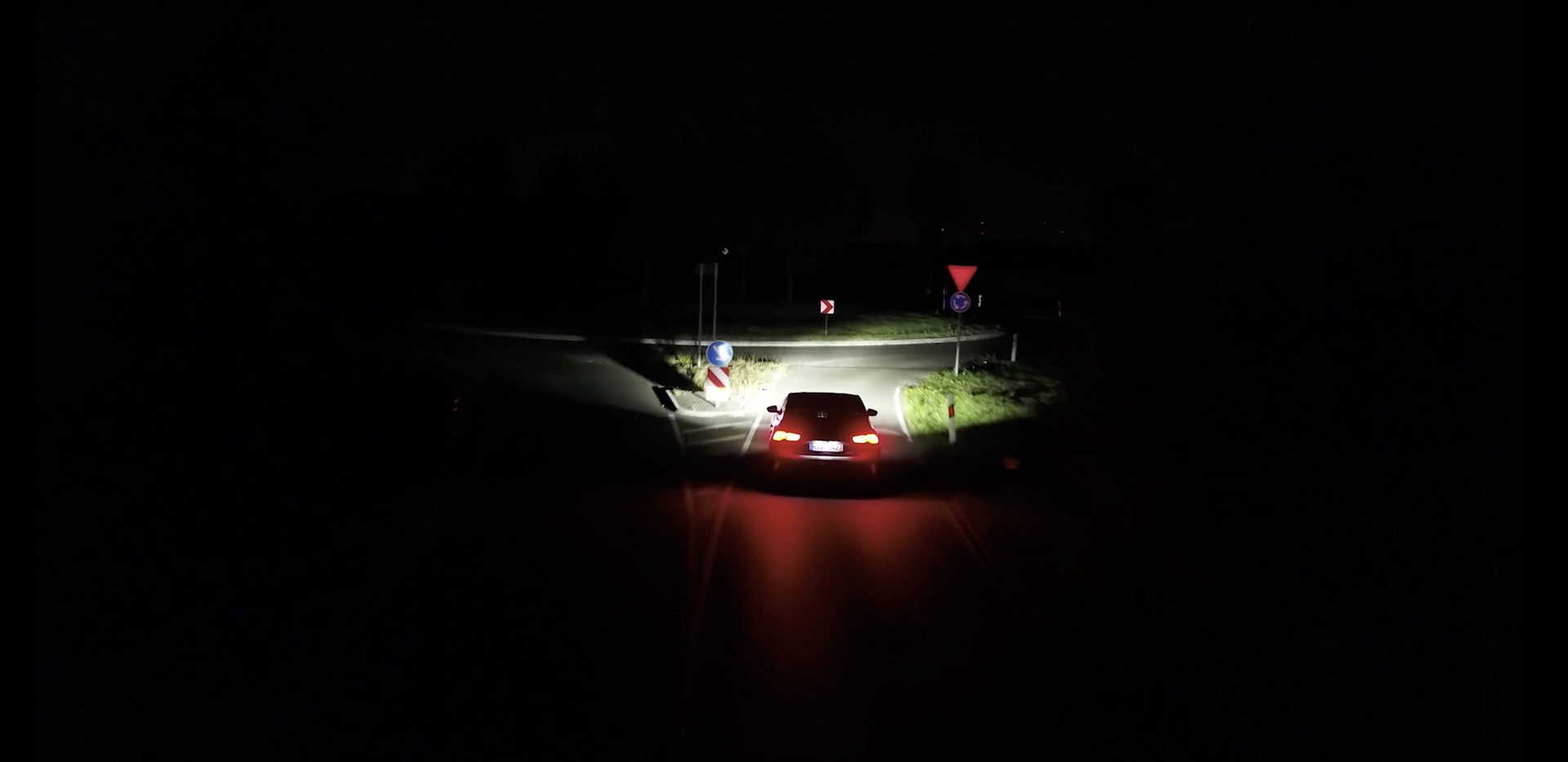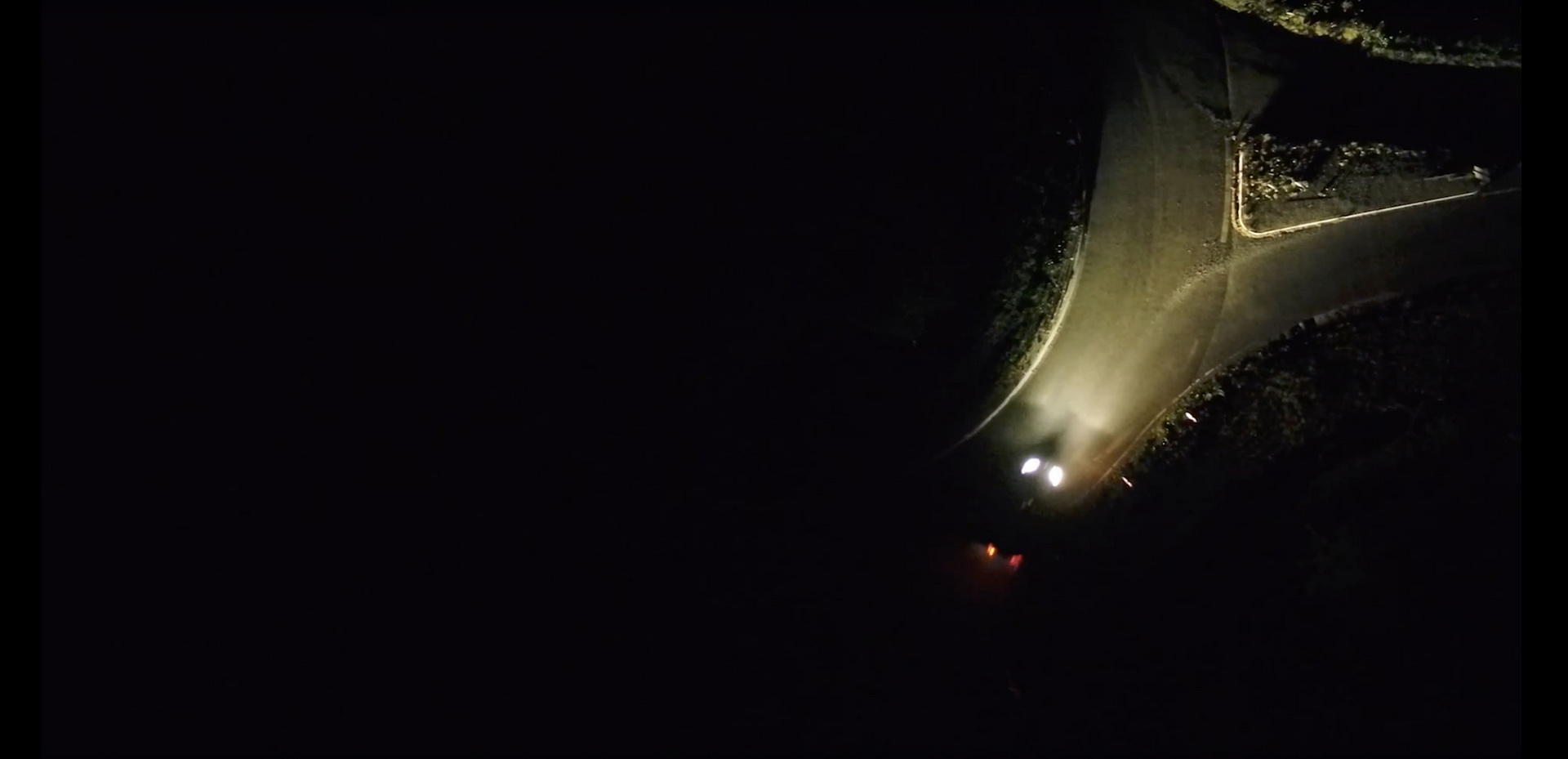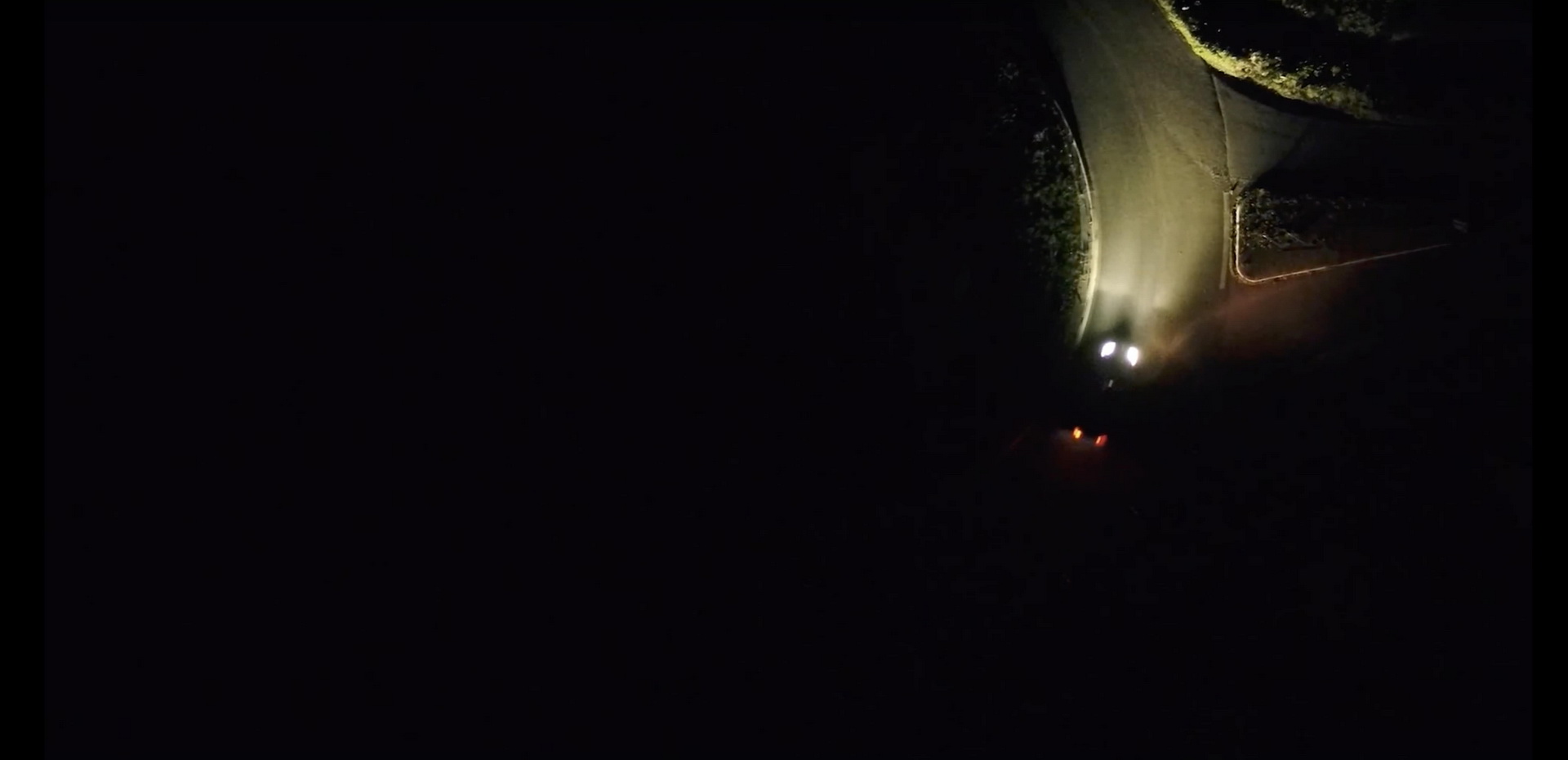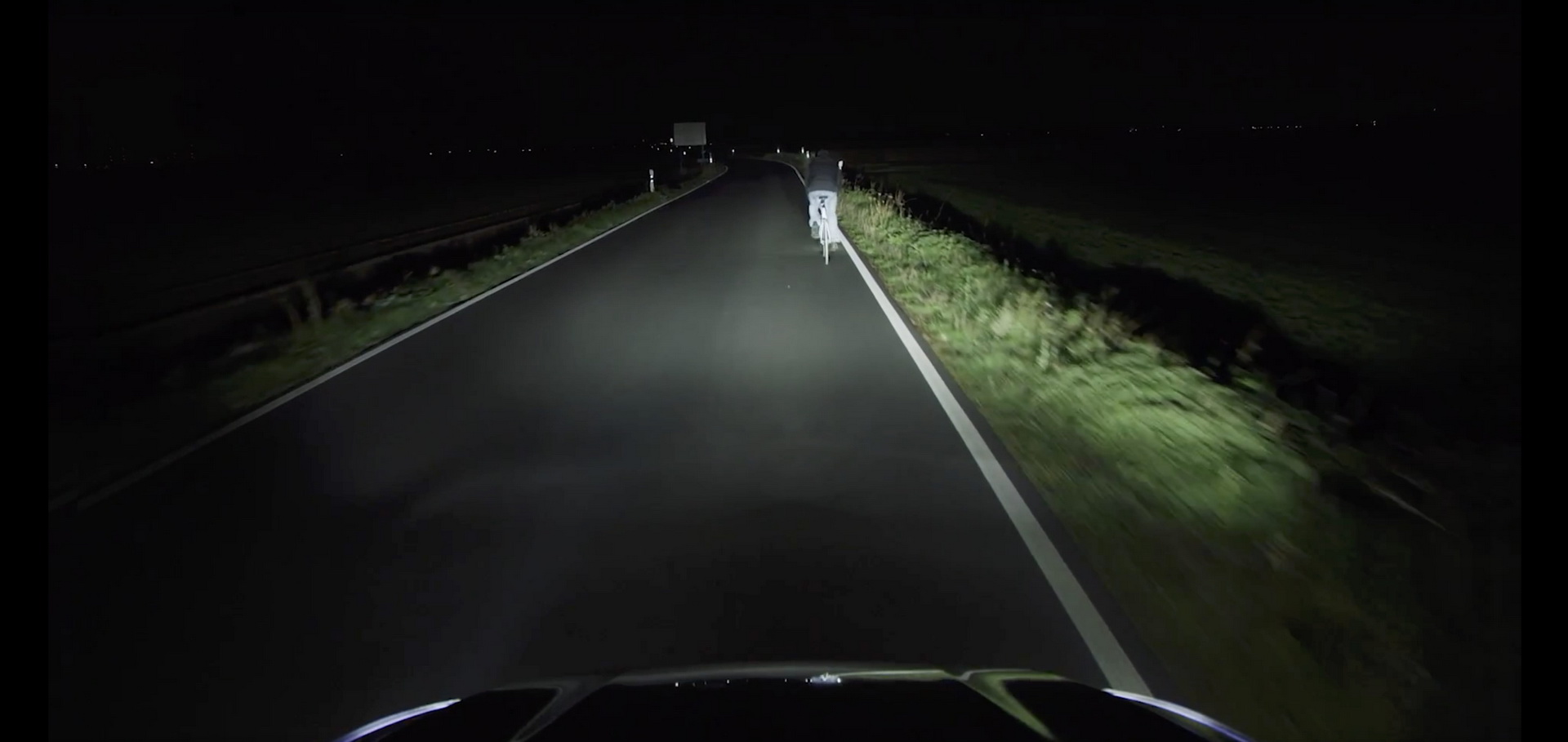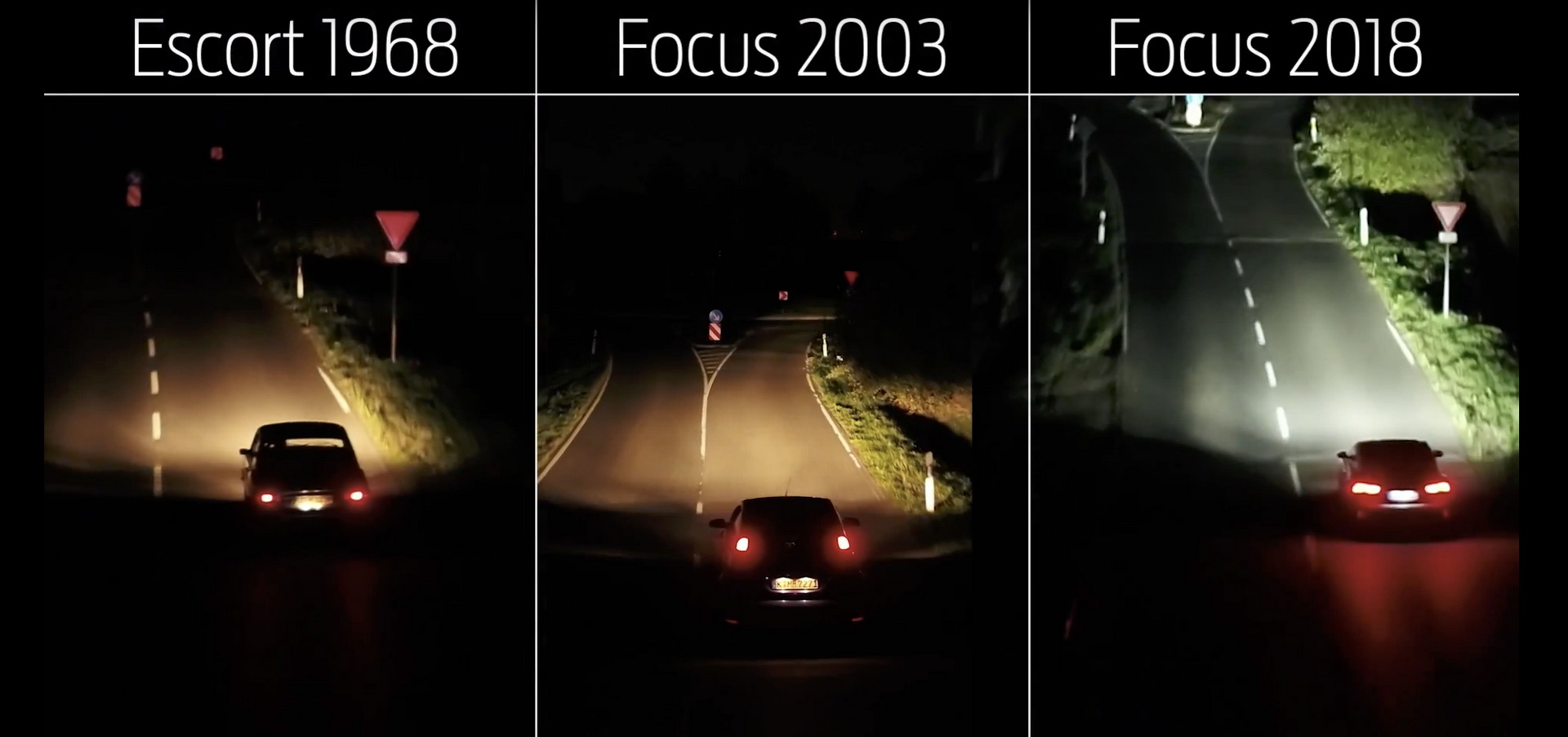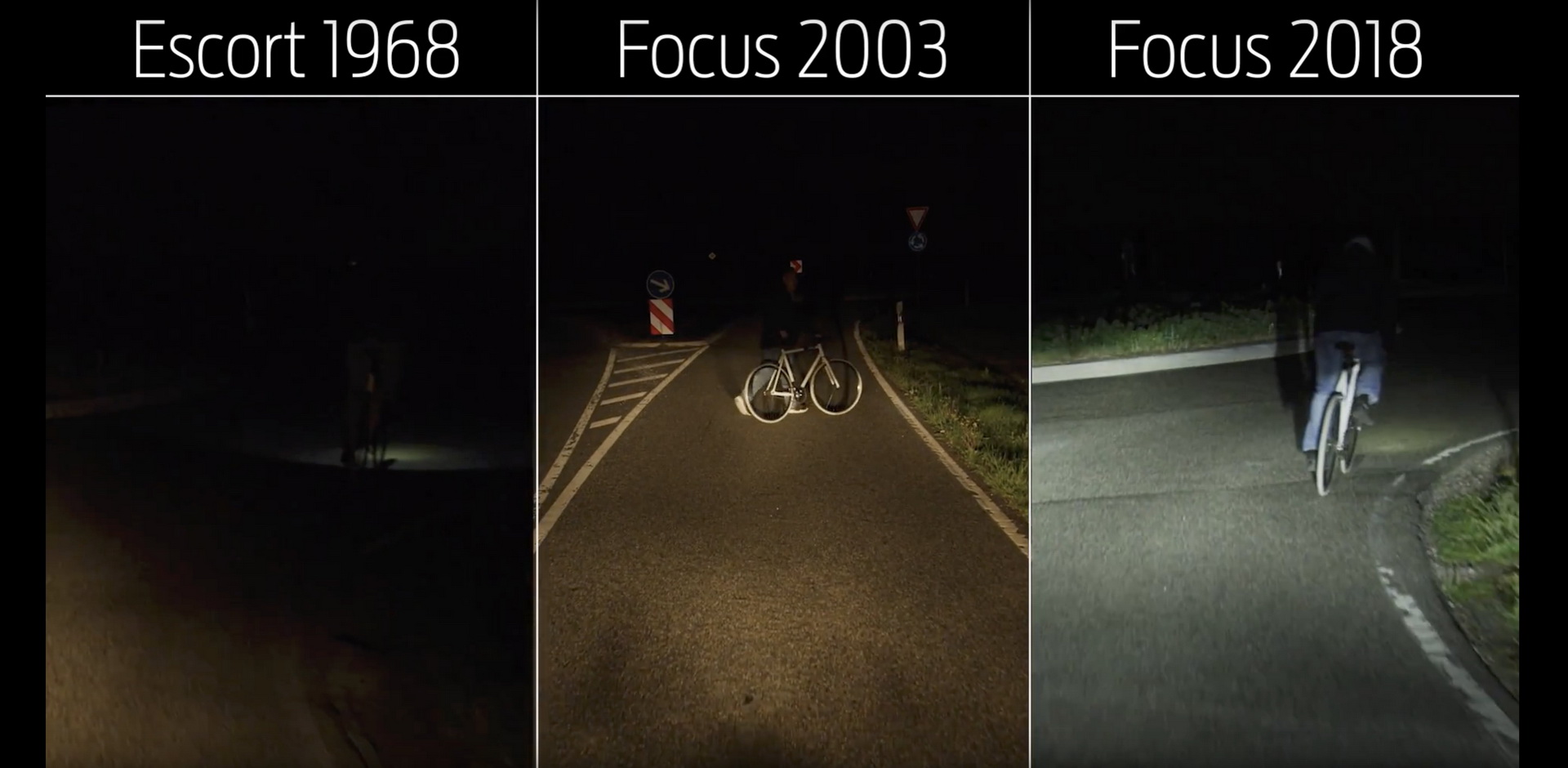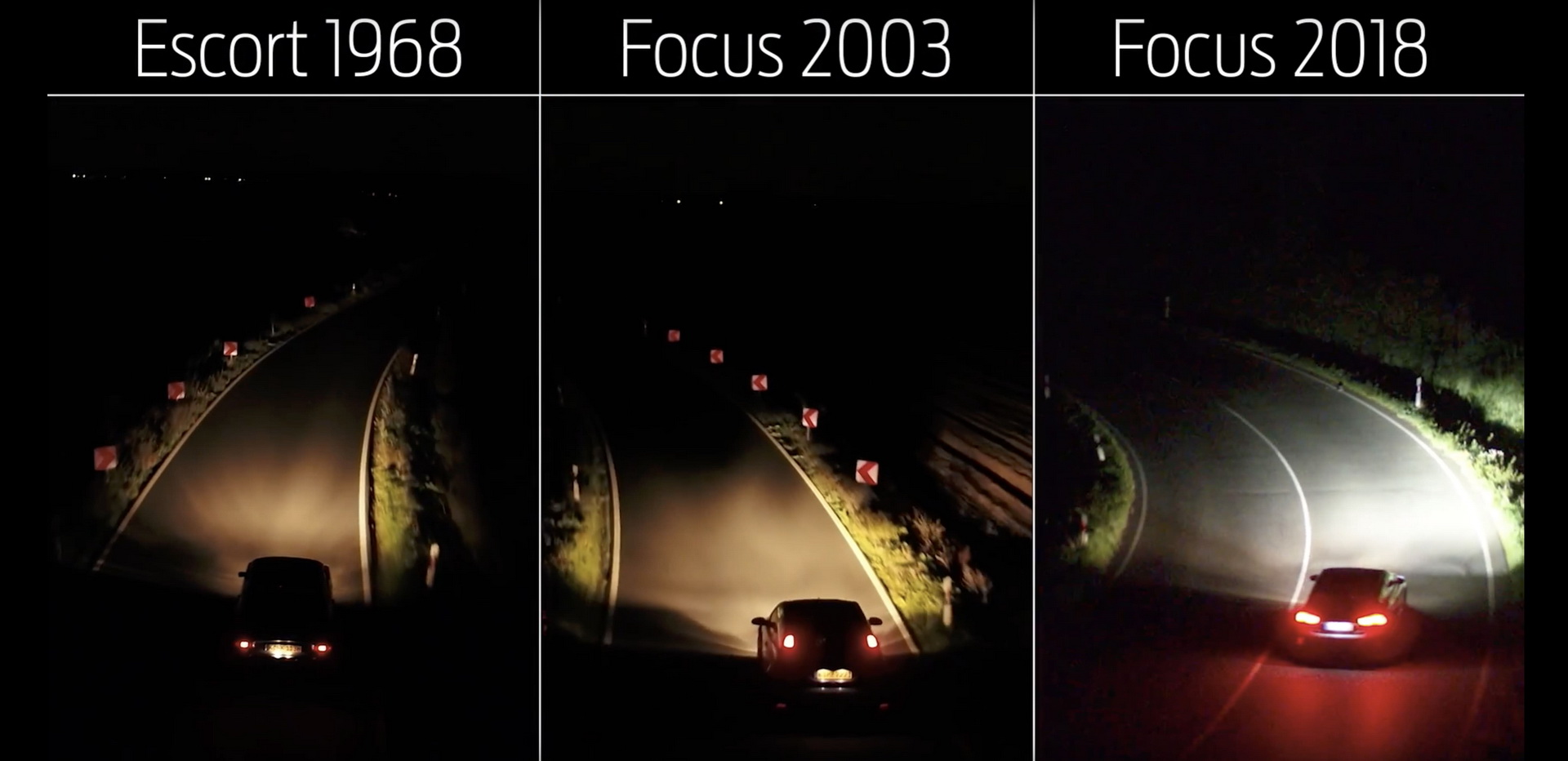In order to make night time driving more comfortable and potentially safer, Ford has introduced new technology that uses road signs and lane markings in order to adjust headlight beams and better illuminate the road ahead.
Ford example, the all-new Focus‘ headlights can widen their beam when approaching a roundabout so that the driver is able to see pedestrians and cyclists by the kerbside more easily.
Instead of relying on GPS mapping, which won’t always reflect the latest road layout changes, Ford’s system offers real-world warning of what lies ahead, as the Adaptive Front Lighting System tracks lane markings and directs the headlamps into curves before the driver has even turned the wheel.
“The dream is that night driving need be no more difficult than driving in the day. Our latest lighting technologies are part of our plan to make that a reality,” stated Ford Europe lighting research engineer, Michael Koherr. “Across Europe 15 per cent of road layouts change every year. Amazingly useful as GPS is, using signs to read the road offers the most up-to-date information you can get.”
According to a Ford survey, 81% of drivers are scared to drive after dark, although the sample size was small, approximately 5,030 drivers in Germany, France, Italy, Spain and the UK. Still, a separate poll, focused only on German drivers, showed that 53% of them were most afraid of “not seeing a pedestrian or cyclist”, while 43% said “seeing obstacles too late”, and 23% added “not seeing the direction of the road ahead.”
Meanwhile, experts say that it’s three times more likely for a driver to get into a fatal crash at night, compared to daytime.
While Ford is looking into multiple other advanced lighting projects, Koherr and his team are now developing new spot lighting technology, which uses an infra-red camera to locate and track people, cyclists and large animals up to 120 meters (393 feet) away.




